The Art of Balance: Designing AI Experiences in an Evolving Digital Landscape
The Art of Balance: Designing AI Experiences in an Evolving Digital Landscape
The Art of Balance: Designing AI Experiences in an Evolving Digital Landscape

Sunny Haladker
Co-founder
Co-founder
6:04pm
6:04pm
6 Jan 2025
6 Jan 2025




Remember those late nights watching Blade Runner? The neon-kissed interfaces of Tron? The gesture-controlled systems in Minority Report? As a product designer at Ripple Design, I spent countless hours absorbing these visions of the future, believing they'd shape how we'd interact with AI. Spoiler alert: reality had different plans.
Let me take you behind the scenes of what it's really like to design AI experiences in 2025, where the challenge isn't just about creating something cool—it's about finding the sweet spot between innovation and familiarity.
The AI Gold Rush
Last year was a watershed moment for our agency. Every client, regardless of their industry, came to us with the same gleam in their eyes: "We need AI integration." It didn't matter if they were selling shoes or running nuclear power plants (okay, maybe not nuclear power plants, but you get the idea). AI had become the new must-have feature, like responsive design in 2010 or mobile-first in 2015.
As a product design agency specializing in UI/UX design and Webflow development, we found ourselves in an interesting position. Everyone wanted to be part of the AI revolution, but nobody quite knew what that should look like. It was like being asked to design a car before wheels were invented.
The Science Fiction Trap
Here's where I need to make a confession: I'm a sci-fi junkie. My initial designs were heavily influenced by those midnight marathons of futuristic films. Holographic interfaces floating in mid-air? Check. Pulsing neon indicators? Double-check. Voice-controlled everything? Triple-check.
But here's the thing about designing for enterprise UX: your personal vision of the future matters far less than what actually works for users. It's like being a chef who loves extra-spicy food cooking for a family restaurant—you need to dial it back a notch (or ten).
The Universal Language of Design
This is where Gestalt's laws, particularly the law of past experience, became our North Star. Think about it: why does everyone instinctively know to click the 'X' in the top right corner to close a window? Why does clicking a logo always take you home? These aren't coincidences—they're learned behaviors that have become universal design patterns.
It's fascinating how these patterns transcend cultural and linguistic barriers. It's like how a smile means the same thing pretty much everywhere you go. In UX design, these patterns are our universal language.
The ChatGPT Effect
Then came ChatGPT, and suddenly, everyone's vision of AI interaction crystallized around a single interface: the chatbot. It was like when Ford's Model T defined what a car should look like—everyone wanted their own version of it.
Initially, this felt limiting. Our clients would come in with grand visions of revolutionary AI experiences, but after a few meetings, they'd inevitably circle back to, "Maybe we should just do a chatbot like ChatGPT?"
The Balancing Act
This is where the real art of UX design comes into play. Imagine juggling six balls, each representing a crucial aspect of design:
1. Stakeholder Expectations: "Make it innovative!"
2. Engineering Constraints: "Keep it feasible!"
3. User Delight: "Make it exciting!"
4. UX Standards: "Keep it familiar!"
5. Timeline: "Launch it yesterday!"
6. Business Needs: "Make it profitable!"
Drop any of these balls, and the whole performance falls apart. Lean too heavily into engineering efficiency, and stakeholders question your value. Focus too much on unique experiences, and development time balloons. Stick too closely to stakeholder wishes, and you end up with yet another chatbot clone.
Finding the Sweet Spot
The secret, we've discovered, isn't in trying to maximize all these aspects simultaneously—it's about finding the right balance for each project. Sometimes that means taking the familiar chatbot interface but adding subtle innovations that delight users without confusing them. Other times, it means pushing the boundaries of what's possible while keeping one foot firmly planted in familiar territory.
Think of it like cooking: you don't need to reinvent the concept of food to create a memorable meal. Sometimes, a small twist on a familiar dish can be more impactful than a completely novel creation.
The Way Forward
As we continue navigating this evolving landscape at Ripple Design, we've learned that the most successful AI integrations aren't necessarily the most groundbreaking ones—they're the ones that find the right balance between innovation and familiarity, between ambition and practicality.
Our approach now is more nuanced. Instead of trying to recreate sci-fi fantasies, we focus on enhancing existing user behaviors with AI capabilities. It's about making technology feel like a natural extension of human capability rather than a replacement for it.
Sometimes, this means saying no to flashy features in favor of subtle improvements that users might not even notice consciously. Other times, it means pushing the envelope just enough to excite users without overwhelming them.
The Lesson
The key lesson in all of this? Great AI UX design isn't about creating the most futuristic interface—it's about creating experiences that feel natural and intuitive while quietly pushing the boundaries of what's possible. It's about finding that sweet spot where innovation meets usability, where excitement meets familiarity, and where business needs meet user delight.
At Ripple Design, we've learned to embrace this balance. Each project becomes a unique equation where we carefully weigh each factor to create solutions that don't just look good on our portfolio—they work in the real world, for real users, solving real problems.
And isn't that what great design is all about?
As we continue to navigate the ever-evolving landscape of AI integration, one thing becomes clear: the future of UX design isn't in recreating sci-fi fantasies—it's in making advanced technology feel so natural that users forget they're interacting with AI at all. Now that's what I call real innovation.
Remember those late nights watching Blade Runner? The neon-kissed interfaces of Tron? The gesture-controlled systems in Minority Report? As a product designer at Ripple Design, I spent countless hours absorbing these visions of the future, believing they'd shape how we'd interact with AI. Spoiler alert: reality had different plans.
Let me take you behind the scenes of what it's really like to design AI experiences in 2025, where the challenge isn't just about creating something cool—it's about finding the sweet spot between innovation and familiarity.
The AI Gold Rush
Last year was a watershed moment for our agency. Every client, regardless of their industry, came to us with the same gleam in their eyes: "We need AI integration." It didn't matter if they were selling shoes or running nuclear power plants (okay, maybe not nuclear power plants, but you get the idea). AI had become the new must-have feature, like responsive design in 2010 or mobile-first in 2015.
As a product design agency specializing in UI/UX design and Webflow development, we found ourselves in an interesting position. Everyone wanted to be part of the AI revolution, but nobody quite knew what that should look like. It was like being asked to design a car before wheels were invented.
The Science Fiction Trap
Here's where I need to make a confession: I'm a sci-fi junkie. My initial designs were heavily influenced by those midnight marathons of futuristic films. Holographic interfaces floating in mid-air? Check. Pulsing neon indicators? Double-check. Voice-controlled everything? Triple-check.
But here's the thing about designing for enterprise UX: your personal vision of the future matters far less than what actually works for users. It's like being a chef who loves extra-spicy food cooking for a family restaurant—you need to dial it back a notch (or ten).
The Universal Language of Design
This is where Gestalt's laws, particularly the law of past experience, became our North Star. Think about it: why does everyone instinctively know to click the 'X' in the top right corner to close a window? Why does clicking a logo always take you home? These aren't coincidences—they're learned behaviors that have become universal design patterns.
It's fascinating how these patterns transcend cultural and linguistic barriers. It's like how a smile means the same thing pretty much everywhere you go. In UX design, these patterns are our universal language.
The ChatGPT Effect
Then came ChatGPT, and suddenly, everyone's vision of AI interaction crystallized around a single interface: the chatbot. It was like when Ford's Model T defined what a car should look like—everyone wanted their own version of it.
Initially, this felt limiting. Our clients would come in with grand visions of revolutionary AI experiences, but after a few meetings, they'd inevitably circle back to, "Maybe we should just do a chatbot like ChatGPT?"
The Balancing Act
This is where the real art of UX design comes into play. Imagine juggling six balls, each representing a crucial aspect of design:
1. Stakeholder Expectations: "Make it innovative!"
2. Engineering Constraints: "Keep it feasible!"
3. User Delight: "Make it exciting!"
4. UX Standards: "Keep it familiar!"
5. Timeline: "Launch it yesterday!"
6. Business Needs: "Make it profitable!"
Drop any of these balls, and the whole performance falls apart. Lean too heavily into engineering efficiency, and stakeholders question your value. Focus too much on unique experiences, and development time balloons. Stick too closely to stakeholder wishes, and you end up with yet another chatbot clone.
Finding the Sweet Spot
The secret, we've discovered, isn't in trying to maximize all these aspects simultaneously—it's about finding the right balance for each project. Sometimes that means taking the familiar chatbot interface but adding subtle innovations that delight users without confusing them. Other times, it means pushing the boundaries of what's possible while keeping one foot firmly planted in familiar territory.
Think of it like cooking: you don't need to reinvent the concept of food to create a memorable meal. Sometimes, a small twist on a familiar dish can be more impactful than a completely novel creation.
The Way Forward
As we continue navigating this evolving landscape at Ripple Design, we've learned that the most successful AI integrations aren't necessarily the most groundbreaking ones—they're the ones that find the right balance between innovation and familiarity, between ambition and practicality.
Our approach now is more nuanced. Instead of trying to recreate sci-fi fantasies, we focus on enhancing existing user behaviors with AI capabilities. It's about making technology feel like a natural extension of human capability rather than a replacement for it.
Sometimes, this means saying no to flashy features in favor of subtle improvements that users might not even notice consciously. Other times, it means pushing the envelope just enough to excite users without overwhelming them.
The Lesson
The key lesson in all of this? Great AI UX design isn't about creating the most futuristic interface—it's about creating experiences that feel natural and intuitive while quietly pushing the boundaries of what's possible. It's about finding that sweet spot where innovation meets usability, where excitement meets familiarity, and where business needs meet user delight.
At Ripple Design, we've learned to embrace this balance. Each project becomes a unique equation where we carefully weigh each factor to create solutions that don't just look good on our portfolio—they work in the real world, for real users, solving real problems.
And isn't that what great design is all about?
As we continue to navigate the ever-evolving landscape of AI integration, one thing becomes clear: the future of UX design isn't in recreating sci-fi fantasies—it's in making advanced technology feel so natural that users forget they're interacting with AI at all. Now that's what I call real innovation.


More Blogs
More Blogs
More Blogs
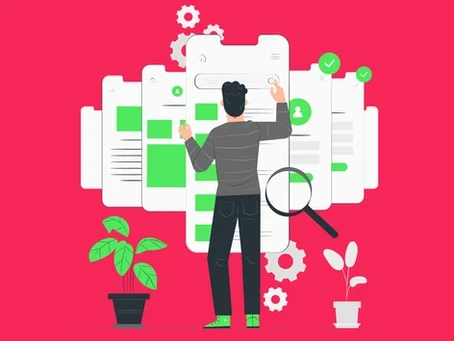
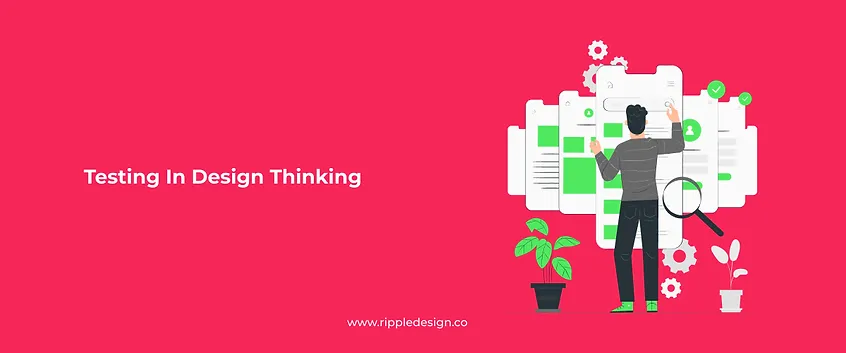
12 Aug 2024
•
5 Min ago
Testing in Design Thinking
The five stages of Design Thinking — Empathize, Define, Ideate, Prototype and Test — are not meant to be sequential steps to be taken as...
Sunny Haladker
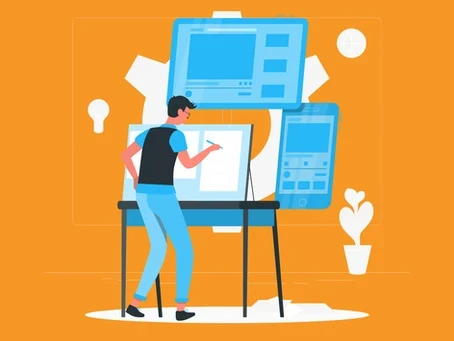
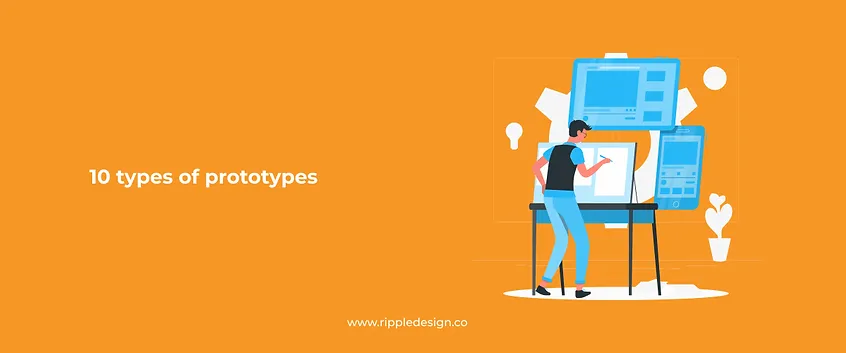
12 Aug 2024
•
5 Min ago
10 types of prototypes
In the prototyping stage of design thinking, we try to explore the problem we have identified and ideated on. We create a sample to test...
Sunny Haladker
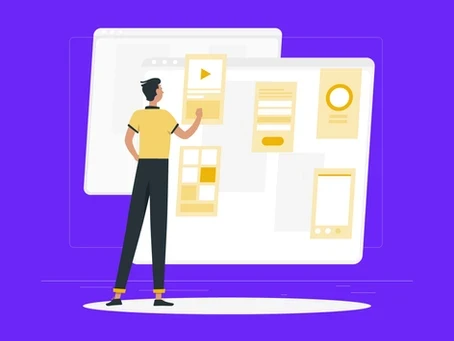
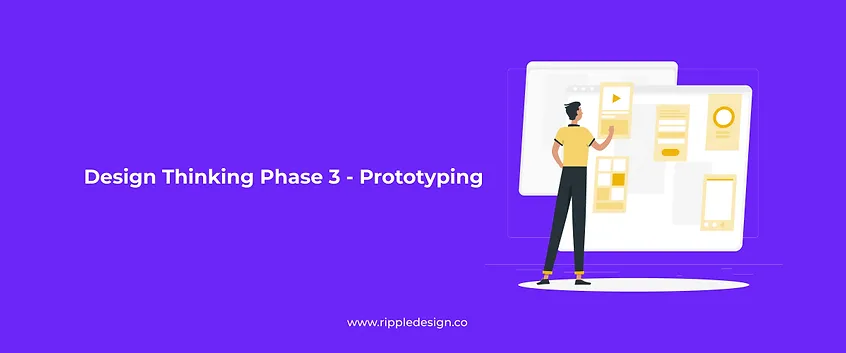
12 Aug 2024
•
5 Min ago
Design Thinking Phase 3 - Prototyping
Design thinking is a human centered, non linear iterative process that helps us understand our users or customers needs better, and...
Sunny Haladker


12 Aug 2024
•
5 Min ago
Testing in Design Thinking
The five stages of Design Thinking — Empathize, Define, Ideate, Prototype and Test — are not meant to be sequential steps to be taken as...
Sunny Haladker


12 Aug 2024
•
5 Min ago
10 types of prototypes
In the prototyping stage of design thinking, we try to explore the problem we have identified and ideated on. We create a sample to test...
Sunny Haladker


12 Aug 2024
•
5 Min ago
Design Thinking Phase 3 - Prototyping
Design thinking is a human centered, non linear iterative process that helps us understand our users or customers needs better, and...
Sunny Haladker




12 Aug 2024
•
5 Min ago
Testing in Design Thinking
Testing in Design Thinking
The five stages of Design Thinking — Empathize, Define, Ideate, Prototype and Test — are not meant to be sequential steps to be taken as...
Sunny Haladker




12 Aug 2024
•
5 Min ago
10 types of prototypes
10 types of prototypes
In the prototyping stage of design thinking, we try to explore the problem we have identified and ideated on. We create a sample to test...
Sunny Haladker




12 Aug 2024
•
5 Min ago
Design Thinking Phase 3 - Prototyping
Design Thinking Phase 3 - Prototyping
Design thinking is a human centered, non linear iterative process that helps us understand our users or customers needs better, and...
Sunny Haladker


12 Aug 2024
•
5 Min ago
Testing in Design Thinking
The five stages of Design Thinking — Empathize, Define, Ideate, Prototype and Test — are not meant to be sequential steps to be taken as...
Sunny Haladker


12 Aug 2024
•
5 Min ago
10 types of prototypes
In the prototyping stage of design thinking, we try to explore the problem we have identified and ideated on. We create a sample to test...
Sunny Haladker


12 Aug 2024
•
5 Min ago
Design Thinking Phase 3 - Prototyping
Design thinking is a human centered, non linear iterative process that helps us understand our users or customers needs better, and...
Sunny Haladker
More Blogs




12 Aug 2024
•
5 Min ago
Testing in Design Thinking
The five stages of Design Thinking — Empathize, Define, Ideate, Prototype and Test — are not meant to be sequential steps to be taken as...
Sunny Haladker




12 Aug 2024
•
5 Min ago
10 types of prototypes
In the prototyping stage of design thinking, we try to explore the problem we have identified and ideated on. We create a sample to test...
Sunny Haladker




12 Aug 2024
•
5 Min ago
Design Thinking Phase 3 - Prototyping
Design thinking is a human centered, non linear iterative process that helps us understand our users or customers needs better, and...
Sunny Haladker